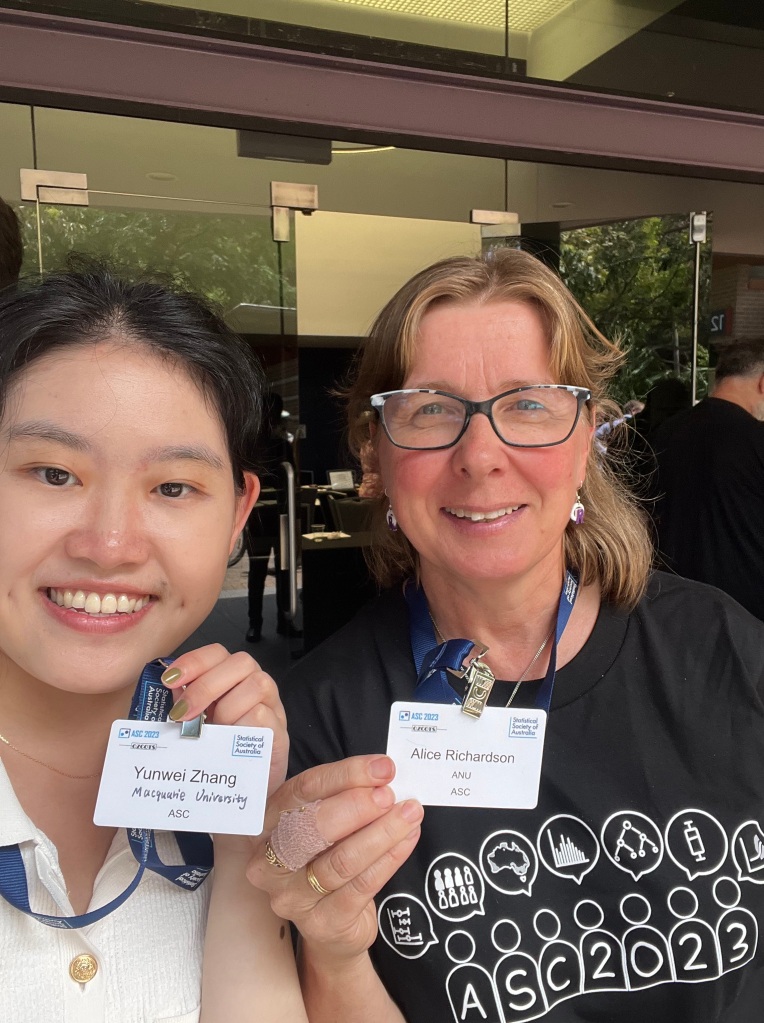The Australian Statistical Society conference took place at the beautiful campus of the University of Wollongong, 11 – 14 December 2023. It was a great opportunity to be with my tribe for a whole week of talks, lunches, dinners, afternoon and morning teas.
My presentation was on trend estimation of sub-national level daily smoking prevalence by age and sex in Australia. This application of multilevel time series modelling in a Bayesian framework produces small domain estimates for 2352 age-sex-state-year combinations across SA3s in Australia from 2011 – 2021. The findings of the study identify the geo-demographic groups with strongest and weakest progress towards the end of tobacco smoking. This will go a long way towards helping health researchers and policymakers to deliver targeted programs to the most vulnerable.
I took the RLadies banner for a summer road trip and it made a huge difference to the RLadies exhibit!

It was cool that the Australian contingent to SAfJR met up again too.

And finally, my all-time favourite slides of the whole conference. First, the Island of Research. I’ll meet you in the Data Analysis Jungle! But please do not block my path of inquiry.

And second, the battle of Clontarf. The picture by Hugh Frazer is from 1826, was held by the Isaacs Art Center Museum and Gallery, Kamuela, Hawaii. I think it has now been purchased by Kildare Partners and was shown in Dublin, Ireland for the 100th anniversary of the battle, in 2014. I’ve seen Taya Collier use this in two presentations now, and what a clever choice it is to illustrate the potential different locations of statistical consultants in the battle that is research collaboration. Never forget that in the thick of this battle, you may actually be the King in the Tent!
